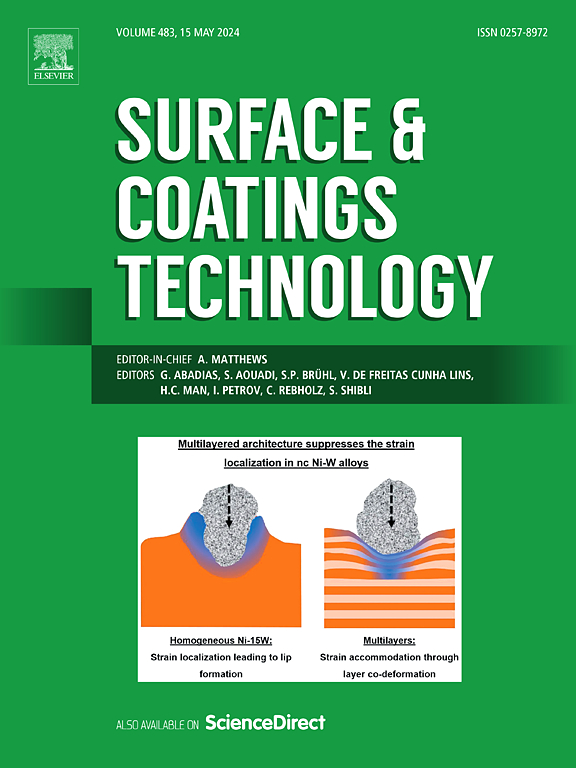Optimizing Ni-YSZ microstructure through anodic aluminum oxide substrate pore size modulation for enhanced reversible solid oxide cell performance
IF 5.3
2区 材料科学
Q1 MATERIALS SCIENCE, COATINGS & FILMS
引用次数: 0
Abstract
Integrating renewable energy sources into the power grid requires the development of efficient, large-scale energy storage systems to address the intermittency and variability of these energy supplies. Reversible Solid Oxide Cells (RSOCs) present a promising solution due to their dual functionality in fuel cell and electrolysis modes. This study investigates the effect of varying the pore sizes of anodic aluminum oxide (AAO) substrates on the microstructural properties and electrochemical performance of Ni-YSZ fuel electrodes in RSOCs. By modulating the pore size of the AAO templates, control over key parameters such as grain size, porosity, and surface roughness of the Ni-YSZ fuel electrodes was achieved. The findings demonstrate that these microstructural parameters significantly influence the fuel electrode's ionic and electronic conductivity, gas diffusion efficiency, and charge transfer reactions. In particular, AAO substrates with optimized pore sizes facilitated the formation of low-tortuosity and high-performance fuel electrodes capable of efficient operation at lower temperatures. This research provides critical insights into designing and optimizing Ni-YSZ fuel electrodes for next-generation RSOCs, contributing to advancing durable and efficient energy storage solutions for large-scale renewable energy systems.
求助全文
约1分钟内获得全文
求助全文
来源期刊

Surface & Coatings Technology
工程技术-材料科学:膜
CiteScore
10.00
自引率
11.10%
发文量
921
审稿时长
19 days
期刊介绍:
Surface and Coatings Technology is an international archival journal publishing scientific papers on significant developments in surface and interface engineering to modify and improve the surface properties of materials for protection in demanding contact conditions or aggressive environments, or for enhanced functional performance. Contributions range from original scientific articles concerned with fundamental and applied aspects of research or direct applications of metallic, inorganic, organic and composite coatings, to invited reviews of current technology in specific areas. Papers submitted to this journal are expected to be in line with the following aspects in processes, and properties/performance:
A. Processes: Physical and chemical vapour deposition techniques, thermal and plasma spraying, surface modification by directed energy techniques such as ion, electron and laser beams, thermo-chemical treatment, wet chemical and electrochemical processes such as plating, sol-gel coating, anodization, plasma electrolytic oxidation, etc., but excluding painting.
B. Properties/performance: friction performance, wear resistance (e.g., abrasion, erosion, fretting, etc), corrosion and oxidation resistance, thermal protection, diffusion resistance, hydrophilicity/hydrophobicity, and properties relevant to smart materials behaviour and enhanced multifunctional performance for environmental, energy and medical applications, but excluding device aspects.
 求助内容:
求助内容: 应助结果提醒方式:
应助结果提醒方式:


